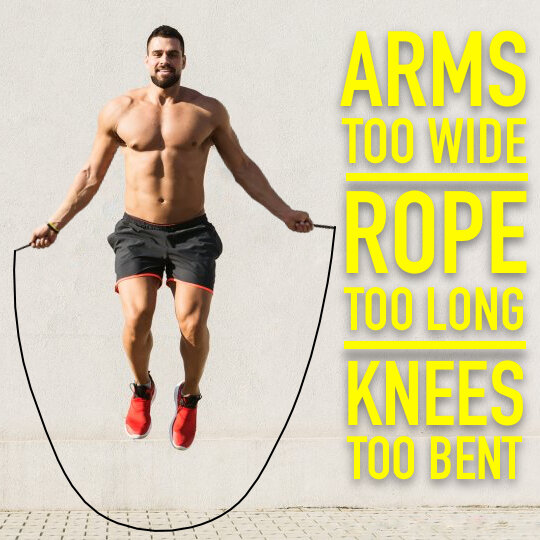Is Skipping Bad For Your Knees?
This is a question that is frequently asked by a lot of beginners when they start to learn how to skip. And the answer might surprise you!
No. No it’s not. Skipping rope is not bad for your knees.
What is bad for your knees though, is some of the things you might be doing when you’re skipping rope which are causing knee pain. So here is my top 5 reasons why you might be experiencing knee pain when you’re skipping.
1 Improper Form
One of the biggest reasons for knee pain when beginners learn how to skip isn’t the activity itself, but how it’s performed. Poor technique can exacerbate the impact on the joints. Beginner jumpers are often slam their feet into the ground instead of being relaxed when they do it - this is due to a lack of experience and confidence with their coordination.
Skipping rope is very demanding on a person’s coordination skills so it’s important to practice correct technique to make the learning process more enjoyable and to prevent injuries from holding you back.
Read my top tips for better double unders to unlock your your double unders potential.
2 Hard Surfaces
Skipping rope is considered a low impact activity. However, this is only true when the jumper is conscious of where they choose to jump. More specifically, what they choose to jump on. Hard surfaces like concrete will increase the impact on your joint regardless of what level you are. Always try to jump on softer surfaces with a little spring in them such as the wooden flooring of a basketball court or an exercise mat.
If the only option available to you is outside on concrete, then invest in am exercise mat instead.
3 Workout Frequency
Because skipping is not like other workout tools, it can be easy to overdo it as a beginner and jump for much longer than you’d normally spend training in a gym. To prevent joint injuries and to allow your muscles enough time to recover between workouts, gradually build up your weekly volume like you would with any other intense form of exercise.
In time you’ll be able to jump for longer and more often. But at the start, don’t run before you walk.
4 Advancing Too Soon
Jump rope freestyle consists of countless skills from the basic bounce, to the double under, to the Moneymaker - considered to be one of the highest level skills. When jumpers discover the vast landscape of possibilities with jump rope, often they immediately try to advance as quickly as possible. A lot of advanced skipping rope tricks are much higher impact on the body.
Focus on mastering the basics before advancing too soon. Allow your joints enough time to properly adapt to withstand the impact.
5 Not Cross-Training
Skipping rope involves the jumper repeated jumping, or ‘bounding’ as it is formally known in gymnastics, on the spot without rest - sometimes for minutes at a time. This puts significant stress on the ligaments that make up our joints, and will cause pain in those joints if they aren’t ready for it. Bounding is considered a ballistic movement, and this means it requires a certain amount of strength conditioning to reduce the risk of injury. You can strengthen your leg muscles through traditional methods such as barbell squats or deadlifts.
What have we learned?
Today we have learned that skipping rope is not bad for your knees. In fact, when done correctly, it can be an excellent way to improve your posture and increase the bone density in your legs. Many of the common hurdles new jumpers face when starting out with jump rope can lead them to believe skipping rope is damaging or harmful - but this couldn’t be farther from the truth.
Any physical activity, when performed incorrectly or to an extreme volume can be harfmul to the body. Be mindful of your body and use these five tips to be safe, and most importantly, to have fun.
Need any more advice?
If you’re still experiencing knee pain after implementing these tips, or have a pre-existing injury that is aggravated by exercise, then seek medical advice from your GP, physiotherapist or an orthopaedic doctor. I am not a qualified doctor.






